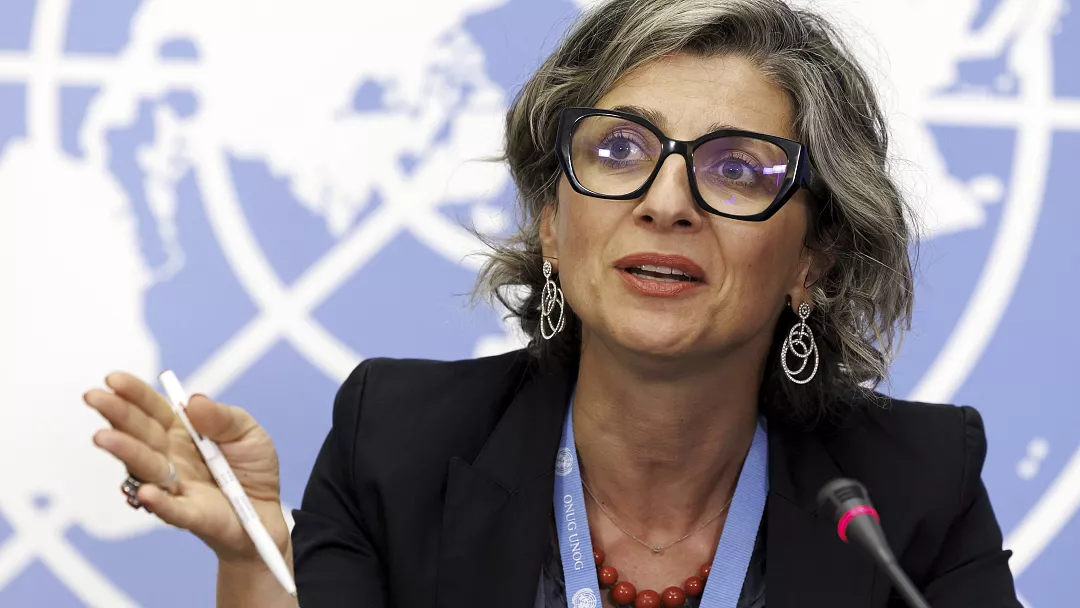
الميناء الأميركي.. رصيف يُشيّد بركام غزة وأشلاء شهدائها
طوال نحو 6 أشهر من الحرب الإسرائيلية المتواصلة على قطاع غزة، ظل الفلسطينيون يناشدون بإدخال آليات ومعدات ثقيلة تساعدهم على إزالة ركام المنازل التي تقصفها إسرائيل لانتشال جثامين الشهداء والجرحى من تحتها، لكن مناشداتهم ذهبت أدراج الرياح، وترك الجرحى لموت محقق تحت الأنقاض ودفن آلاف الشهداء تحتها.
وفي الأسابيع الأخيرة وعلى وقع الحرب أيضا بدأت عشرات الآليات والمعدات الثقيلة بالدخول إلى غزة من الجانب الإسرائيلي بدعم أميركي، ولكن ليس لانتشال المصابين والشهداء، بل لنقل ركام يقول الفلسطينيون إنه معجون بأشلاء شهدائهم، لاستخدامه في بناء رصيف بحري على شاطئ غزة تقول واشنطن وتل أبيب إنه سيكون مخصصا لإدخال المساعدات الإنسانية للقطاع.
ونقلت وكالة الأناضول عن شهود عيان قولهم إن عشرات الجرافات والشاحنات العملاقة تعمل على نقل آلاف الأطنان من ركام المنازل التي دمرتها إسرائيل على مدار الأشهر الماضية من مناطق متفرقة في غزة إلى شاطئ المدينة المنكوبة لاستخدامه في بناء الرصيف البحري الجديد.
وكان الرئيس الأميركي جو بايدن أعلن في السابع من مارس/آذار الجاري أنه كلف جيش بلاده بإنشاء ميناء مؤقت على سواحل غزة لإدخال المساعدات.
والشهر الماضي، أعلن متحدث باسم وزارة الدفاع الأميركية (بنتاغون) عن تفاصيل الميناء الذي سيبلغ طوله 500 متر ويستغرق بناؤه نحو شهرين، فيما رحبت إسرائيل بالفكرة وزعم رئيس الوزراء بنيامين نتنياهو في تصريحات أدلى بها للصحافة أنه “صاحب فكرة الميناء”.
أطنان الركام وأشلاء الشهداء
يقول المهندس المدني الفلسطيني فتحي رياض، إن بناء الرصيف البحري يحتاج إلى مئات آلاف الأطنان من ركام المنازل المدمرة وهذا يعني جمعه من جميع مناطق مدينة غزة باعتبارها الأقرب للميناء الجديد.
ويشير في مقابلة أجرتها معه وكالة الأناضول إلى أن “نقل هذه الأطنان من الركام يحتاج إلى عدد كبير من الشاحنات والجرافات العملاقة وبالتالي لا يمكن الاعتماد على ما هو متوفر من آليات في القطاع لدى الشركات المحلية لأنها ذات إمكانيات ضعيفة”.
ويؤكد أن عشرات الآليات الضخمة دخلت إلى غزة خلال الأسابيع الماضية وبدأت بالفعل بنقل كميات هائلة من ركام المنازل إلى الميناء الجديد.
ويتوقع أن يتم الانتهاء من بناء الرصيف البحري الجديد خلال فترة لا تزيد على 3 أشهر في ظل الإمكانيات الضخمة المتاحة لذلك سواء من آليات وقوات أميركية تسهم في المشروع.
ويقول فلسطينيون نزحوا مؤخرا من مدينة غزة إلى جنوب القطاع عبر شارع الرشيد المحاذي لشاطئ البحر، إنهم شاهدوا عشرات الشاحنات تنقل ركام المنازل التي قصفتها إسرائيل في مناطق متفرقة من مدينة غزة إلى منطقة الميناء الجديد.
ويؤكد شهود عيان في شهادات أدلوا بها لوكالة الأناضول، أن مئات المنازل التي دمرتها غارات الجيش الإسرائيلي ما زالت تحت أنقاضها جثث لشهداء لم تتمكن طواقم الإنقاذ من انتشالها بسبب ضعف الإمكانيات، ومن المؤكد أن كميات الركام الكبيرة التي يتم نقلها ممزوجة بأشلاء ودماء ضحايا الحرب.
“رصيف برائحة الموت”
ووفق تقرير أعده مفوض الأمم المتحدة لحقوق الإنسان فولكر تورك، نشره الخميس الماضي، حول الأوضاع في الأراضي الفلسطينية، فإن آلاف الأشخاص ما زالوا مفقودين جراء الحرب الإسرائيلية على غزة، مبينا أن كثيرا من المفقودين مطمورون تحت منازلهم المدمرة.
كما قال رئيس حكومة تسيير الأعمال الفلسطينية، محمد اشتية، خلال الاجتماع الأسبوعي للحكومة في رام الله الاثنين، إن رصيف الممر المائي الذي يتم بناؤه على شاطئ غزة “رصيف برائحة الموت”.
ويتابع اشتية “هل يعقل أن رصيف الممر المائي الذي يتم بناؤه على شاطئ غزة من مخلفات المباني المهدمة معجون بجثامين الشهداء التي كانت مدفونة تحت الركام؟ هذا رصيف لممر مائي برائحة الموت”.
تتذرعان بالإنسانية
من جهته، يقول المحلل السياسي الفلسطيني أسامة عبد الهادي إن “الولايات المتحدة الأميركية وإسرائيل تتذرعان بالإنسانية فيما يتعلق ببناء الميناء الجديد على شاطئ بحر غزة وبالواقع هم بعيدون عن الإنسانية”.
ويضيف عبد الهادي “لو كانوا صادقين لقاموا بإدخال الشاحنات والجرافات العملاقة التي دخلت غزة لبناء الميناء، من أجل إنقاذ آلاف الجرحى الذين ظلوا ينزفون حتى الموت تحت أنقاض المنازل التي دمرتها دولة الاحتلال”.
ويتابع “هذه الآليات والمعدات دخلت غزة من أجل بناء ميناء يحقق مصالح إسرائيل بالسيطرة على شاطئ غزة ومحاولة تهميش معبر رفح البري على الحدود مع مصر وانتزاع السيادة الفلسطينية عليه، إضافة لتشجيع الفلسطينيين على الهجرة عبر الرصيف الجديد”.
التهجير وتشديد الحصار
ويعتقد عبد الهادي أن الترحيب الإسرائيلي بإنشاء الميناء وتفعيل الممر البحري يثير شكوكا، فإسرائيل تحاصر غزة وتغلق معابرها وتعرقل دخول المساعدات ومن غير المعقول أن تقدم على هذه الخطوة إلا إذا كانت تحقق لها مصلحة خفية ويبدو أنها مرتبطة فعلاً بتشجيع هجرة الفلسطينيين من القطاع.
ويعزز هذا الحديث تصريحات نتنياهو بأن “الميناء يمكن أن يسهل إخراج الفلسطينيين من غزة”، مضيفا أنه “لا يوجد أي عائق أمام مغادرة الفلسطينيين لقطاع غزة، باستثناء عدم رغبة الدول الأخرى في قبولهم”.
وقد أدلى نتنياهو بالتصريحات آنفة الذكر الأسبوع الماضي خلال اجتماع خاص للجنة الشؤون الخارجية والأمن في البرلمان (كنيست) وفقا لقناة كان الإسرائيلية.
كما يرى أسامة عبد الهادي، أن الميناء وإدخال المساعدات الإنسانية عبره سيكون ذريعة للولايات المتحدة وإسرائيل للسيطرة على جزء من شاطئ غزة تحت حجة حماية الميناء وتسهيل وصول المساعدات ومنع حركة حماس من السيطرة عليها.
ويقول إن “شاطئ بحر غزة هو المتنفس الوحيد لسكان القطاع وكان قبل الحرب يزدحم بالمقاهي والمطاعم والأماكن الترفيهية ووجود قوات أميركية أو إسرائيلية للحماية المزعومة للميناء سيعني منع الفلسطينيين من الوصول إلى مساحة واسعة من الشاطئ وهي المساحة الأهم، لأن الميناء يتم بناؤه في أكثر منطقة حيوية بالقطاع”.
ويعتبر المحلل السياسي الفلسطيني أن هذا الميناء الأميركي أداة لتشديد الحصار على الفلسطينيين، موضحا أن الولايات المتحدة لن تسمح بأي حضور لحركة حماس ومؤسساتها أو حتى المؤسسات الفلسطينية المحلية في آلية عمل الميناء وبالتالي فإن الميناء سيعمل وفقا للرغبة والقيود التي تريدها إسرائيل. وعليه فهو يرى أن “هذا الميناء احتلالي ويسمح بدخول الجيش الأميركي لتخوم غزة”.
وكان المقرر الأممي الخاص المعني بالحق في الغذاء مايكل فخري، ندد في وقت سابق خلال الشهر الجاري بالمبادرة الأميركية ببناء الرصيف البحري.
وقال “إنها المرة الأولى التي أسمع أحدا يقول إننا بحاجة إلى استخدام رصيف بحري. لم يطلب أحد رصيفا بحريا، لا الشعب الفلسطيني ولا المجتمع الإنساني”.
ووصف فخري الاقتراح الأميركي بأنه “خبيث وجاء استجابة لمصالح انتخابية”، لافتا إلى أن الولايات المتحدة تقدم في الوقت نفسه قنابل وذخائر ودعما ماليا لإسرائيل في حربها على غزة.
المصدر : الجزيرة + الأناضول











